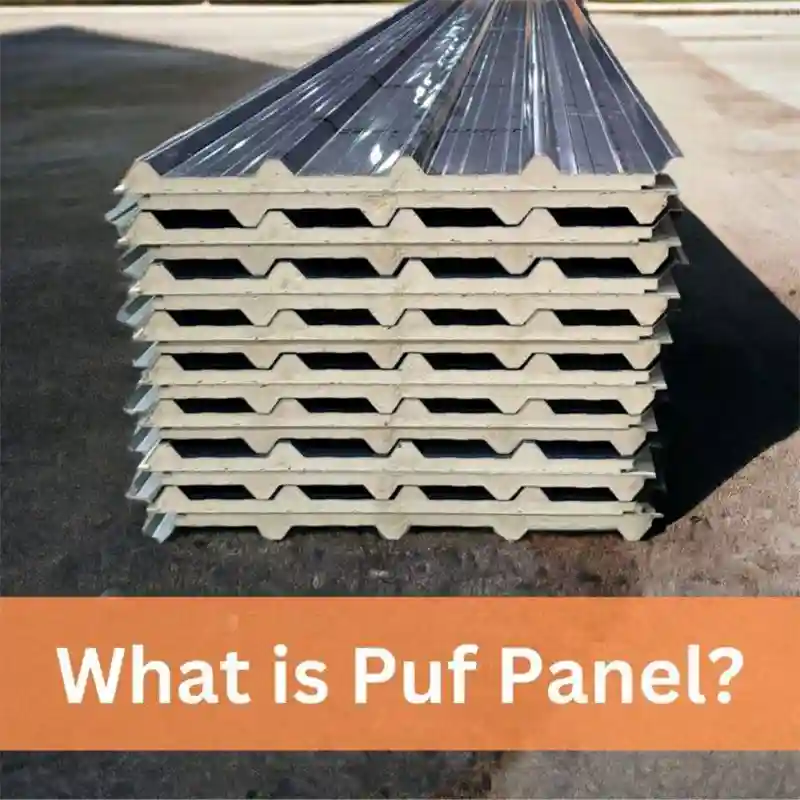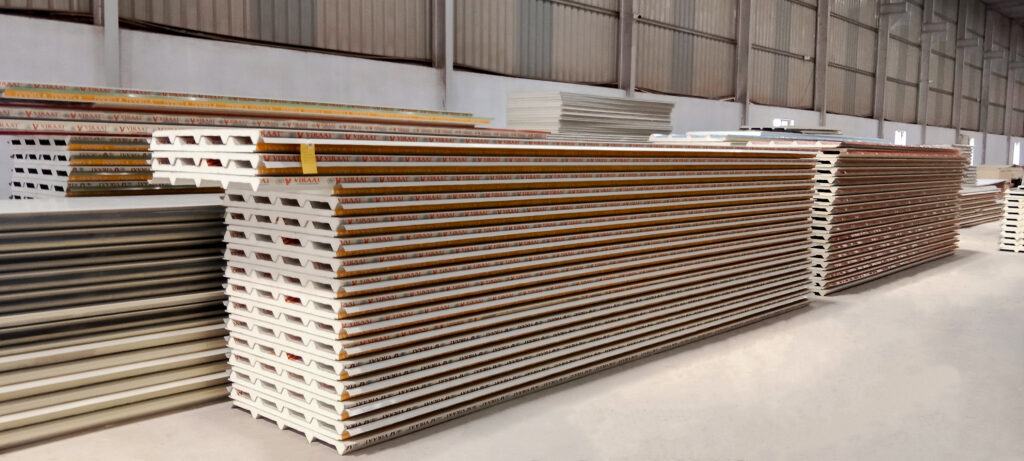
Introduction:
In the dynamic landscape of construction materials, PUF panels have emerged as revolutionary solutions, offering a blend of insulation prowess, structural integrity, and versatility. This comprehensive guide delves into the intricacies of PUF panels, from their advanced manufacturing process to their wide-ranging applications in industrial, commercial, and residential projects. Discover how PUF panels are setting new standards in energy efficiency and sustainability, shedding light on their significance in modern construction practices and their role in shaping the future of the industry.
What are PUF Panels?
PUF panels, also known as Polyurethane Foam panels, are composite construction materials comprised of a rigid polyurethane foam core sandwiched between two layers of metal or other suitable material. This sandwich-like structure imbues PUF panels with exceptional thermal insulation properties and structural strength, making them indispensable in various construction applications. Widely used in industrial, commercial, and residential projects, PUF panels offer unparalleled energy efficiency and durability, revolutionizing modern construction practices. Lightweight and easy to install, they reduce construction time and labor costs, and are ideal for roofing, walls, and cold storage facilities, supporting the demand for sustainable, energy-efficient building solutions.
The Manufacturing Process:
The manufacturing of PUF panels is a sophisticated process that involves cutting-edge technology and precision engineering. At the heart of this process lies the fully automatic continuous production line, where raw materials are transformed into finished panels with remarkable efficiency.
The journey begins with the preparation of raw materials: metal sheets and liquid polyurethane foam. These materials undergo rigorous quality checks to ensure adherence to specifications and standards. Once approved, they are fed into the production line.
In the continuous foaming machine, liquid polyurethane foam is injected and spread evenly between the metal sheets. This process requires meticulous control of temperature, pressure, and flow rate to achieve uniform distribution and optimal foaming characteristics.
Next, the panels traverse through a curing chamber, where the foam undergoes a chemical reaction and solidifies, bonding with the metal sheets to form a seamless composite structure. The curing process is crucial for imparting strength and durability to the panels, and it is carefully monitored to ensure consistent quality.
Once cured, the panels are cut to size and undergo finishing processes such as trimming, profiling, and surface treatment as per specific requirements. The end result is a meticulously crafted PUF panel ready for deployment in diverse construction projects.
Benefits of PUF Panels:

- Superior Insulation: PUF panels boast excellent thermal insulation properties, effectively minimizing heat transfer and reducing energy consumption for heating or cooling purposes.
- Structural Strength: Despite their lightweight nature, PUF panels exhibit impressive structural strength, making them suitable for both load-bearing and non-load-bearing applications.
- Fire Resistance: PUF panels can be manufactured with fire-retardant properties, enhancing safety in buildings and structures.
- Quick Installation: Prefabricated and easy to install, PUF panels streamline the construction process, saving time and labor costs.
- Versatility: PUF panels are highly versatile and can be customized to meet specific design and performance requirements, making them ideal for a wide range of applications.
Applications of PUF Panels:

- Cold Storage Facilities: PUF panels are extensively used in the construction of cold storage facilities such as warehouses, refrigerated trucks, and walk-in freezers. Their exceptional insulation properties help maintain optimal temperature conditions for storing perishable goods.
- Industrial Buildings: In industrial settings, PUF panels find applications in factories, warehouses, and manufacturing units, where thermal insulation and structural integrity are paramount. They provide efficient solutions for roofing, wall cladding, and partitioning.
- Commercial Buildings: From retail outlets to office complexes, PUF panels are utilized for roofing, facade systems, and interior partitions, offering energy-efficient solutions with aesthetic appeal. Their versatility allows architects and designers to unleash their creativity while ensuring optimal performance.
Conclusion
PUF panels have emerged as indispensable components in modern construction practices, offering a winning combination of insulation efficiency, structural strength, and versatility. From industrial warehouses to commercial complexes and residential homes, PUF panels have found their way into diverse applications, transforming the way we design, build, and inhabit structures. With their efficient manufacturing process, benefits of puf panel, and wide-ranging applications, PUF panels continue to shape the future of construction, paving the way for sustainable and resilient built environments.
FAQ’s
1. How are PUF panels installed?
PUF panels are designed for ease of installation. They can be quickly assembled on-site using a simple interlocking system, reducing construction time and labor costs. The panels can be cut to fit specific dimensions and are suitable for both walls and roofs.
2. Are PUF panels environmentally friendly?
Yes, PUF panels contribute to sustainable building practices by enhancing energy efficiency and reducing the carbon footprint of buildings. The insulation properties of PUF panels help lower heating and cooling requirements, leading to significant energy savings. Additionally, the materials used in PUF panels are often recyclable.
3. How do PUF panels compare to traditional insulation materials?
Compared to traditional insulation materials, PUF panels provide superior thermal insulation with a thinner profile. This makes them more space-efficient while offering better energy savings. They also offer greater structural strength and durability, making them a long-lasting solution for construction projects.
4. Can PUF panels be customized?
Yes, PUF panels can be customized in terms of size and thickness to meet specific project requirements. They are available in various finishes and colors, allowing for aesthetic flexibility in design.
